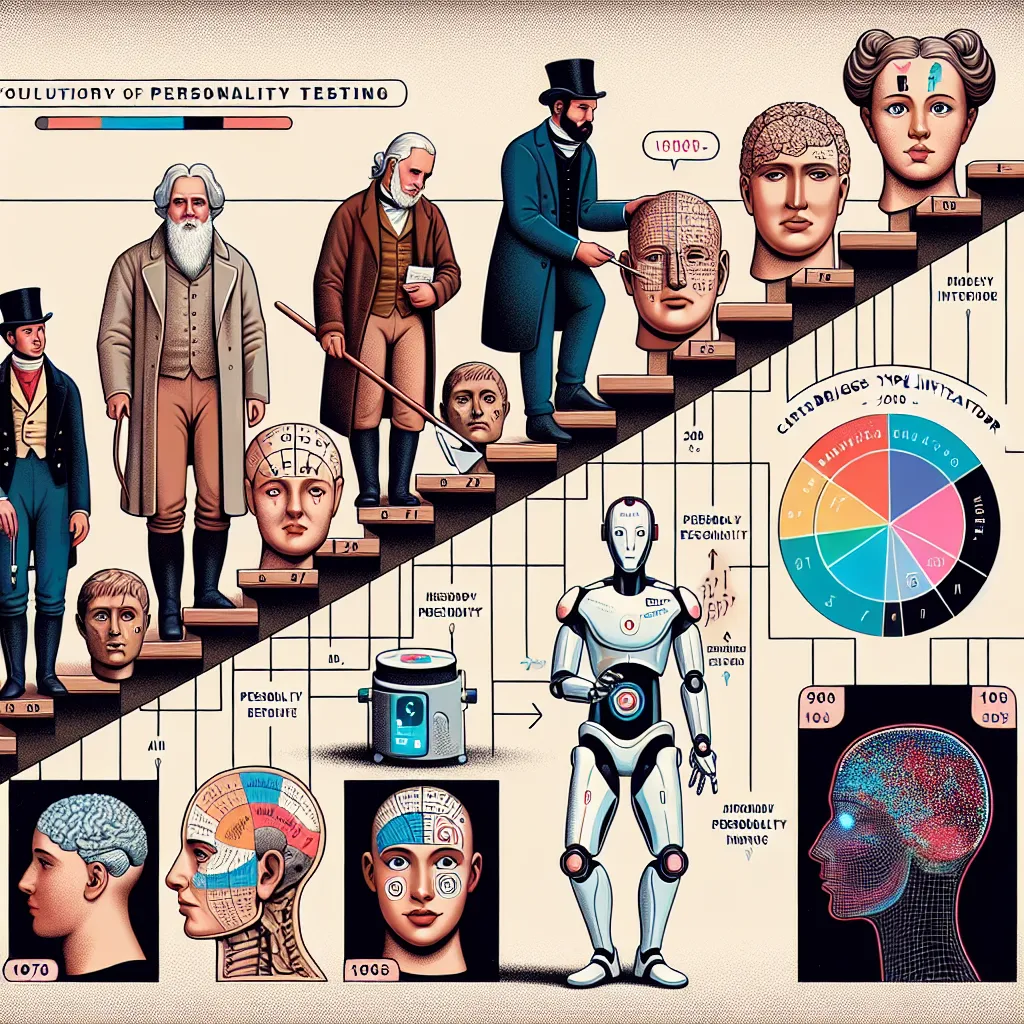The landscape of personality testing has undertaken a significant evolution over the years, transitioning from rudimentary assumptions to intricate assessments that hinge upon psychological, genetic, and environmental factors. This evolution charts a course through history, psychology, and technology, revealing how our understanding of the human psyche has deepened, allowing us to interpret the intricacies of individual personalities with increasing accuracy.
Personality tests commenced as simplistic philosophical observations. The ancient Greeks, for example, introduced the concept of the Four Temperaments—sanguine, choleric, melancholic, and phlegmatic—attributing personality traits to bodily fluids. Whereas these early frameworks lacked empirical validation, they paved the way for the recognition that personality could indeed be categorized.
Fast-forward to the late 19th and early 20th centuries, and the dawn of psychology as a science heralded a new era for personality testing. Pioneers like Carl Jung introduced concepts such as Introversion and Extraversion, deepening the understanding of personality as an interplay between innate predispositions and acquired experiences. Meanwhile, the first World War catalyzed the development of standardized testing to assess the abilities of army recruits, consequently birthing the Alpha and Beta tests—precursors tomore advanced assessments.
In the subsequent years, two major instruments emerged: the Minnesota Multiphasic Personality Inventory (MMPI), developed in the 1930s, and the Myers-Briggs Type Indicator (MBTI), launched in the 1940s. The MMPI, designed to identify psychiatric diagnoses, became a staple in clinical settings. The MBTI took a different route, focusing on normal personality differences and becoming widely used in career counseling and workforce development. Both tests are still in use today, though their applications and the science behind them have evolved tremendously.
Scientific advancements have been pivotal to the development of personality testing. The Five Factor Model, also known as the Big Five, emerged in the latter half of the 20th century, laying the groundwork for a more empirically supported approach to understanding personality. The Big Five assesses traits such as Openness, Conscientiousness, Extraversion, Agreeableness, and Neuroticism, providing a robust framework utilized by psychologists worldwide.
The contemporary landscape of personality testing is enriched by the integration of new technologies and methodologies. The advent of artificial intelligence (AI) and machine learning has introduced novel ways to analyze and interpret data. AI-driven personality assessments now utilize patterns in our online behavior, language usage, and even micro-expressions to provide insights into personality traits, sometimes with startling accuracy.
Moreover, the rise of the internet and online platforms has democratized access to personality assessments. No longer confined to clinical or corporate settings, anyone with internet access can take various tests and receive instantaneous feedback. This accessibility raises both opportunities for self-awareness and challenges of ensuring the quality and reliability of these tools.
The ethical considerations surrounding personality testing have also matured. As tests have moved online and become part of employment processes, concerns about privacy, consent, and potential biases have come to the forefront. It is widely recognized now that personality testing must be administered with the utmost care, ensuring results are used constructively and without stigmatizing individuals or perpetuating discrimination.
Another evolutionary branch of personality testing is its applications in diverse fields. Besides its use in psychological contexts, personality assessments now inform educational approaches, enhancing student learning by tailoring methods to varied personality types. Similarly, in the realm of medicine, an understanding of a patient’s personality can help tailor treatment plans and doctor-patient communication strategies.
The field of personality testing is ever-evolving, and current trajectories suggest several future developments. There is increasing interest in the intersection of genetics and personality, exploring how our DNA shapes who we are. Longitudinal studies, as well, are providing a dynamic view of how personalities change and develop over time, challenging the notion of personality as a static, unchanging construct.
Another emergent trend is the cross-cultural application of personality tests. As globalization continues, there is a growing need to ensure personality assessments are relevant and reliable across different cultural contexts. This requires ongoing research and adaption of tools to fit the diverse tapestry of human experiences.
In conclusion, the evolutionary path of personality testing is marked by a progression from simple theoretical concepts to refined, scientifically grounded instruments. Advancements in psychological research and technology have greatly expanded the scope and depth of personality assessments, providing valuable insights into human behavior. Despite this progress, continued vigilance is required to address ethical implications and ensure the responsible use of such powerful tools. As we look ahead, it is clear that the evolution of personality testing will continue at the intersection of human understanding and technological innovation, providing a fascinating window into the complexities of the human condition.



Leave a Comment